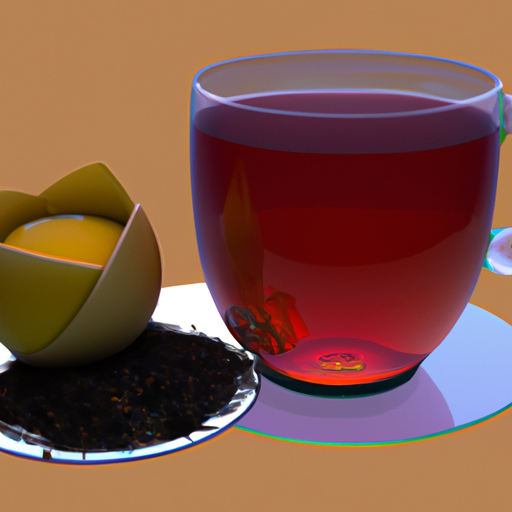Tea Fusion: The Art and Potential Benefits of Blending Tea Cultures
A Brewed Awakening: The Emergence of Tea Fusion
Blending tea cultures is like brewing a magic potion that combines the secrets, the flavors, and the essence of both traditions. It has the potential to create an exquisite, ingenious fusion of tastes, techniques, and customs. Rather than remaining true to one's roots (as tempting as it might be to bark up the wrong tea tree), could mixing tea cultures evoke a bold, unprecedented tea experience? You be the judge!
Tea has always played a significant role in various cultures around the world. With the ease of travel, exchange of ideas, and global influences, combining elements from different tea cultures can be an alluring invitation to experiment in the realms of creativity and art. So, what exactly does tea fusion mean? And what are the potential benefits of blending tea cultures? Journey with me in this thought-provoking exploration of cross-cultural tea. Let's spill some tea (but not too much because that would be a waste).
Combining Techniques
Some of the unique aspects of any tea culture lie in their brewing techniques, the intricate rituals, and the process of preparing and serving the tea. Incorporating a technique from one culture into another can produce a refined and distinct experience. The possibilities are endless! Here are some prime examples of blending tea techniques from different cultures:
| Culture A | Technique A | Culture B | Technique B | Tea Fusion Idea |
|---|---|---|---|---|
| Chinese (Gongfu tea) | Brewing tea with a small teapot and multiple quick infusions | British (Afternoon tea) | Enjoying black tea with milk, sugar, and a selection of baked goodies | Gongfu-style afternoon tea session with scones, sandwiches, and desserts |
| Japanese (Senchadō) | Steeping green tea with a side-handle teapot | Indian (Masala chai) | Adding spices and boiling tea with milk and sugar | Senchadō chai: a fusion of Japanese green tea and Indian spices with a hint of milk and sweetness |
| Turkish | Brewing tea with a stacked teapot (çaydanlık) | Moroccan | Serving tea with fresh mint in a beautifully ornamented teapot | Turkish-Moroccan tea: brewing tea à la Turca with fresh Moroccan mint leaves |
Remember, rules are meant to be bent (...and potentially broken) – at least, when it comes to tea fusion. After all, ain't no party like a tea party, and a tea party don't stop until everybody’s teacups’ runnin’ dry.
Merging Flavor Profiles
Another aspect that lends itself to an exciting tea fusion is blending leaves from different tea cultures to create a unique and harmonious flavor. Taking a cue from the popular art of wine blending, mixing teas can result in tremendous versatility and complexity, capturing the best of both worlds. Imagine a table adorned with wondrous combinations:
| Tea 1 | Flavor Profile 1 | Tea 2 | Flavor Profile 2 | Tea Fusion Offspring |
|---|---|---|---|---|
| Chinese Pu-erh tea | Earthy, bold, sometimes sweet, with fermented notes | Japanese Hojicha | Toasty, sweet, and smoky | Pu-erh Hojicha fusion: a blend that boasts earthy and toasty notes |
| Indian Darjeeling tea | Delicate, floral, fruity, and a slight astringency | Taiwanese Oolong tea | Light, floral, and milky | Darjoolong: a captivating fusion with floral, fruity, and milky characteristics |
| Kenyan black tea | Strong, malty, and brisk | Russian Caravan tea | Smoky, robust, and reminiscent of campfires | Kenyan Caravan: an adventurous merger of malty and smoky sensations |
These suggestions are just a stepping stone into the vast possibilities of tea blending. The key is to experiment fearlessly, recognizing that the perfect balance comes from a careful understanding and appreciation for the unique aspects of each culture's tea traditions.
The Potential Benefits of Blending Tea Cultures
Blending tea cultures can lead to unforeseen benefits, whether on a personal or global level. A few potential outcomes include:
- Broadened horizons: Tea fusion can open up a whole new world of taste, presentation, and ritual, encouraging greater appreciation for other cultures' practices and techniques.
- Innovation: It can inspire exploration and creativity, allowing for new ways to enjoy tea and drive the industry forward.
- Increased global connections: Tea enthusiasts, producers, and purveyors may forge global networks, fostering mutual understanding and shared knowledge.
Tea fusion has the potential to transcend cultural boundaries, allowing people from different backgrounds and traditions to learn from each other and celebrate their shared love for tea. With a united front, we can create tea experiences that inspire and connect, one steaming cup at a time.
Stirring up the Pot
So, dare to dive into the inventive realm of tea fusion, and let your imagination whisk you away like matcha frothing in a chawan. Blending tea cultures offers an enthralling opportunity to create a harmonious dialogue between the endless facets of tea. The time has never been better to mix things up – quite literally. Let the wild rumpus start, and don't be afraid to share your fearless tea fusion experiments in the discussion area below because, at the end of the day, we're all just here to have a brew-tiful time. Cheers to the blend!
